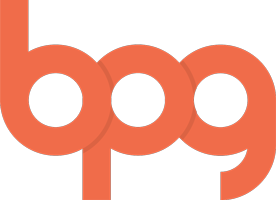I’m a devout streaming media user. I cut cable almost a year ago. I don’t buy music anymore, with the exception of vinyl, which I mostly buy as a keepsake, a way to physically interact with the music I most care about. Instead I stream via Rdio. Religiously.
I spent the better part of this past weekend watching Hemlock Grove, Netflix’s new original series about a town ransacked by werewolves and other supernatural phenomena. It’s not a phenomenal show (see what I did there?). And it’s not nearly as good as House of Cards, Netflix’s last original series release. Hemlock Grove is passable entertainment, fun to watch, mysterious enough to keep you engaged, but so laughably acted and directed that you have to wonder just exactly how it got greenlit. But one thing is for sure: I seriously got my $7.99 worth this month.
In a normal transaction of goods, the value equation is simple: cost < benefit. If this is equation is lopsided, the transaction rarely happens. But in digital goods, and streaming media as a subset, the cost/benefit relationship is a much more complicated one.
Depth of content
It’s all about selection, or what I like to call “the infinite jukebox” (watch out for another blog on this in the near future). Netflix has an adequate selection, but far from hitting the infinite capabilities. Compare to Vudu, Amazon Video on Demand, or any of the a la carte services and you’ll paint a rather sad picture of Netflix.
And that’s exactly why Netflix is in the original content game now. Unable to compete in a long tail market, Netflix has turned to the other end of the graph, aiming for quality over quantity.
Its worth pointing out that the value of this particular content lies in its exclusivity. And Amazon is now playing this game too, with it’s own Amazon Original Pilots.
Quality of content
As I mentioned, Hemlock Grove isn’t great TV, but it’s better than a whole lot of the other crap that passes on the networks. House of Cards was absolutely fantastic. And the upcoming Arrested Development season is probably my single most anticipated piece of television in, well, ever. As Netflix Chief Content Officer Ted Sarandos says, “The goal is to become HBO faster than HBO can become us.”
Ease of access
This one is more complicated than it sounds. It’s not just a matter of press-play-watch-TV, but a deep psychological shift in our understanding of what television is. Cable is a wasteland – an infinite jukebox with a broken needle – 1000 channels of stuff you don’t want, filtered by DVRs, overpriced thanks to the wonders of bundling, and ultimately the least satisfying service I’ve ever used. Ever. I’d rather deal with my cell phone provider than my cable company. That’s saying something.
The importance of the unique release structure of Netflix Original Series cannot be overstated. Full seasons at a time is the way we’ve consumed television since the early days of DVD, and it’s a truly amazing way to experience episodic content. I’m not saying weekly content releases are bad, but I think it works much better for programming that doesn’t fit into seasons. YouTube shows are a great example, as are daytime soap operas. But single-season episodic television shows just work better when you can binge on them. (Probably worth a separate discussion of how the proverbial water cooler has been affected by this shift.)
Pricing
And in the end, it still comes down to this: is it worth $7.99 a month?
Wait, what? Is that even a question? How can we actually ask ourselves something like that? Isn’t it obvious?
Unfortunately it’s not obvious at all. We make ridiculous choices based on price every day, and we have a truly astonishing ability to neglect very simple price comparisons on nearly everything.
Netflix is 8 bucks a month. Cup of Starbucks is 3 bucks. Gas is 3-5 dollars per gallon. Milk is 3 dollars per gallon too. A bottle of water is a buck twenty-nine, which makes it actually about 8.25 a gallon (insane!). Monthly cable bills are somewhere around $60 for internet, and another $75 for television (even more for phone service, or the cable companies’ new product scam, home security systems). An Amazon Prime membership comes with most of the same programming as Netflix, and runs $79/year, which makes it $6.58/month. That’s right, it’s cheaper than Netflix, and gives you all the benefits of Prime shipping too. I spend ten bucks a month on my Rdio subscription. I used to spend $300 a month on music, back in the CD era, and I was perfectly happy doing so.
All this to say that price is relative, but every time we press the play button on our connected devices, we’re comparing the costs against a hundred other apples-to-oranges items that typically fall into our disposable income budgets.
For some, this decision isn’t so cut and dry. But in my opinion, Netflix is worth every penny.

